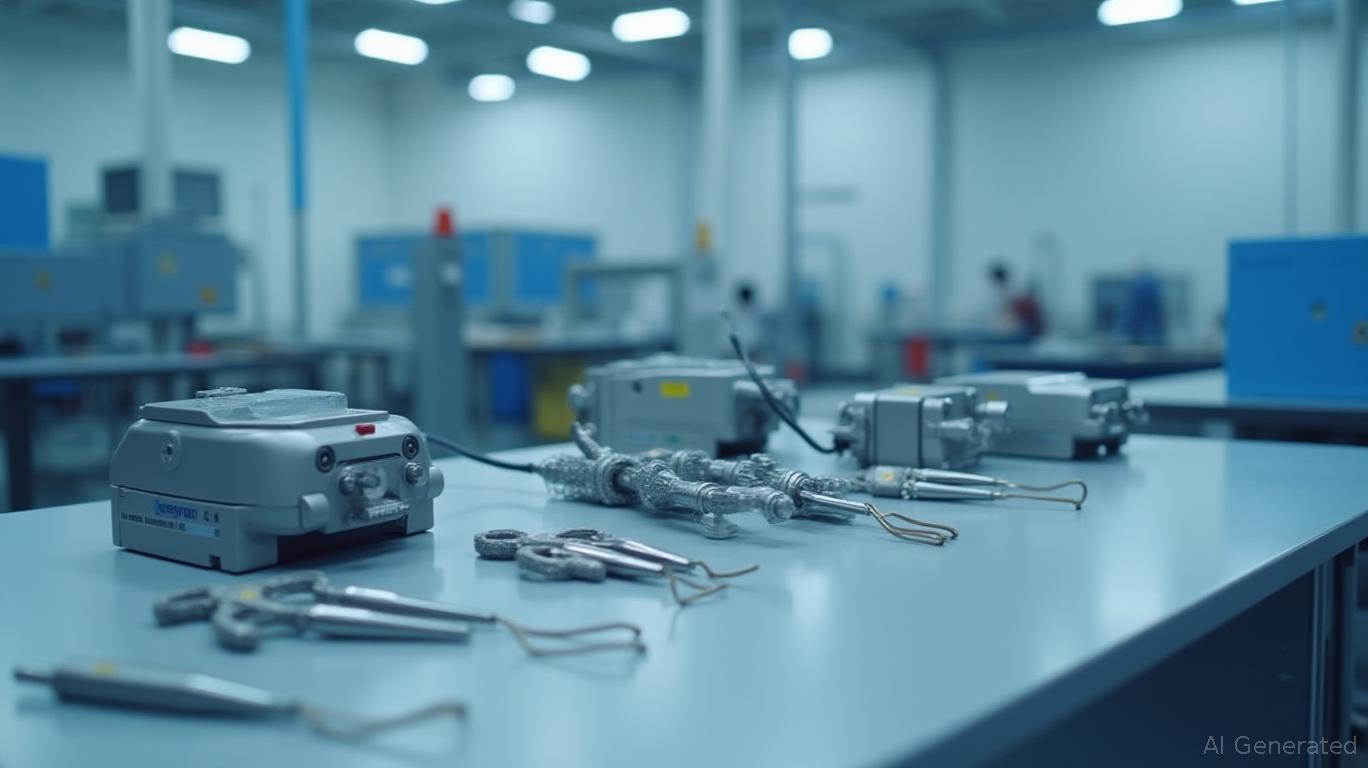AInvest Newsletter
Daily stocks & crypto headlines, free to your inbox
Enerpac Tool Group's Q2 2025 results underscore a company navigating a challenging industrial landscape with a mix of resilience and caution. Despite posting top-line growth, margin pressures and macroeconomic risks have kept investors on edge. Here's an assessment of whether Enerpac's stock merits a long-term commitment or a wait-and-see approach.

Enerpac's adjusted EBITDA margin fell 160 basis points year-over-year to 23.2%, primarily due to a shift in product mix toward lower-margin Heavy Lifting Technologies (HLT) and service projects. Gross profit margins also declined by 110 bps to 50.5%, reflecting the drag from HLT sales. While the DTA acquisition boosted IT&S segment sales by 4.4%, its integration contributed to margin compression.
However, the third-quarter update offers hope: adjusted EBITDA margins rebounded to 25.9%, suggesting cost discipline measures (e.g., restructuring under PEP and ECX programs) are taking hold. would clarify whether this is a trend or an outlier.
The DTA acquisition added $2.9 million in incremental sales (pre-foreign exchange drag) but strained margins due to its lower profitability profile compared to Enerpac's core businesses. Cortland Biomedical's 33.1% organic growth, however, offset some of this pressure. The $72.6 million net debt and 0.5x debt-to-EBITDA ratio indicate financial flexibility, but investors should scrutinize how much further margin erosion DTA might cause.
Enerpac's cautious outlook hinges on assumptions of no broad recession and stable foreign exchange rates. Yet, the company already faced a $2.9 million sales hit from currency fluctuations in Q2. Geopolitical tensions and potential trade barriers loom large, especially for a multinational firm reliant on global supply chains. The company's exposure to the industrial sector—sensitive to manufacturing demand—adds volatility.
Enerpac's stock has risen 18% year-to-date, valuing the company at ~8.5x FY25E EBITDA (based on $155M midpoint guidance). This premium reflects faith in its Cortland Biomedical growth and balance sheet strength ($119.5M cash, $10.2M in Q2 share buybacks). However, if margin recovery falters, this valuation could come under pressure.
The dividend and buyback program signal confidence, but investors should assess whether free cash flow (projected $85–95M) justifies current multiples. A could highlight capital efficiency.
Bull Case: Enerpac's strong cash position, Cortland's secular growth, and margin stabilization in Q3 suggest resilience. The 0.5x leverage ratio leaves room to weather downturns or pursue accretive deals.
Bear Case: Margin pressures and macro risks could prolong underperformance. The 5% FY25 sales guidance (vs. 5.1% Q2 growth) implies headwinds in H2, and a recession could amplify these challenges.
Verdict: Enerpac is a hold for now. While its balance sheet and healthcare exposure provide a cushion, the stock's YTD gains may reflect optimism already priced in. A contrarian opportunity could emerge if shares dip on margin or macro concerns, provided EBITDA guidance holds. Monitor Q4 results and geopolitical developments closely.
Historical performance adds nuance to this stance. A backtest of buying
on earnings announcement dates and holding for 20 days over the period showed an average return of 100.6%, though with a maximum drawdown of -24.26%. This highlights potential outsized gains but underscores volatility tied to macro conditions. The Sharpe ratio of 0.67 suggests acceptable risk-adjusted returns for investors willing to tolerate short-term swings.In conclusion, Enerpac's story is one of strategic bets (DTA, Cortland) and operational grit. Investors seeking defensive exposure to industrial tools and healthcare equipment might find merit here, but the path to outperformance hinges on margin recovery and macro stability.
Daily stocks & crypto headlines, free to your inbox
Comments
No comments yet